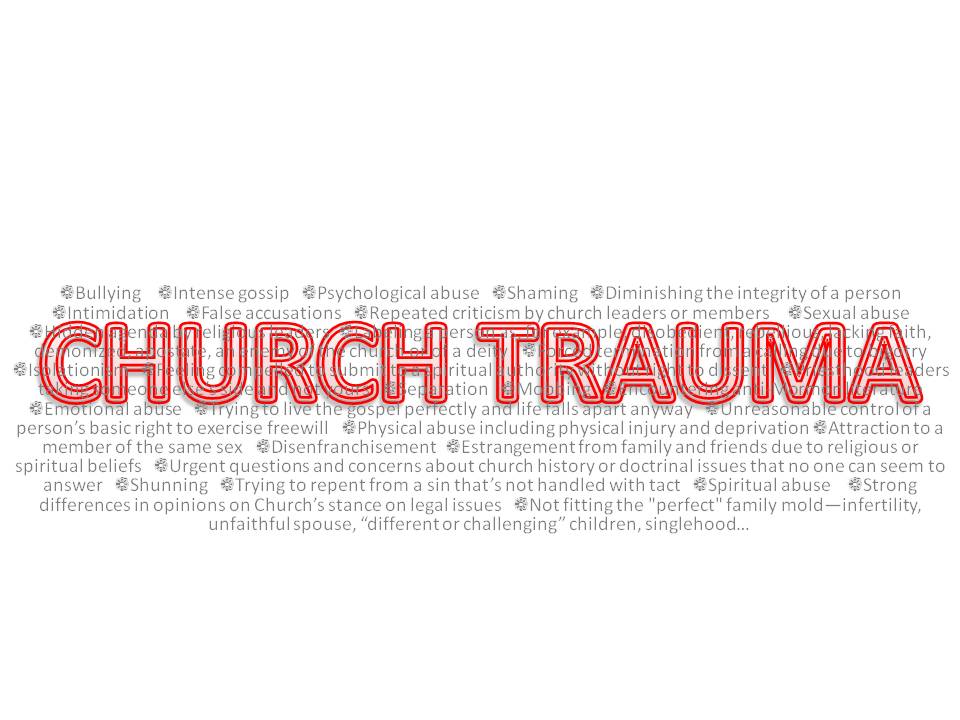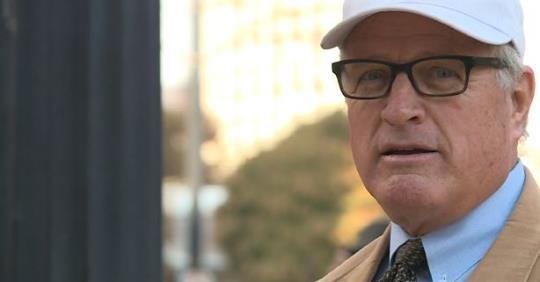Survivors Are Trail Blazers
- I wonder how real I dare be with people.
- I wonder who will be the next friend to drop off my list.
- I struggle with knowing how to hold and live my truth while still honoring another’s sacred.
These sentiments are not uncommon for church trauma sufferers because there are a variety of unique struggles in dealing with church trauma that are not found in normal post-traumatic circumstances. One of the more prevalent is the powerful unspoken rule in church systems requiring or expecting members to only speak positively of their leaders and church. K.D. Bilsky describes it as the “can’t talk” rule, expecting current and former members to be silent about problems or inconsistencies within the church system (2013). Frequently, if a church member identifies or draws attention to a flaw in the church or in a leader, that individual is too often labeled as the cause of the problem and is thus blamed for any negative consequences. The “can’t talk” rule is also an example of a broad deficiency in clear avenues for healing from church trauma. In fact, active church members are likely to interpret any confusion or disequilibrium as a sign of the traumatized individual’s personal spiritual deficiency, rather than as a mark of the church’s possible abusive dynamics.
As I’ve pondered on the unique pressure to only show the positive, of being unable to effectively address the errors and hurts within a religion, my mind has occasionally rested on a man named James Stockdale. James endured extreme suffering during the Vietnam conflict as a prisoner of war. While undergoing the incarceration, he noted the importance of speaking one’s truth, of being real. More specifically, while a POW, he observed that there were three kinds of men: pessimists, optimists, and realists. He noticed that it was only the realists that survived. One can readily understand why the pessimists did not, but why did the optimists not survive either? He noted that they would not look at the facts. They just pretended they didn’t exist–that at any moment they would be freed because they didn’t deserve to be there and only bad things happen to bad people. It’s interesting to ponder this in light of trauma sufferers because of how often they are told to just exert a positive mental attitude and if they do so, they can get through and overcome the trauma.
Yet, as Stockdale observed, that approach is faulty. Because the optimists had all the faith in the world and a positive outlook to go with it, yet they were unwilling to really address the brutal facts. They’d say things like, “You know, we will be out of here by Christmas” or “We’ll be rescued by Valentine’s Day.” Any positive movement convinced them that it was their rescue. But when those things did not happen, their spirits over time could not endure the constant disappointments of life’s realities. In the end, they too chose to give up and die.
But not so with the realists. They saw the reality of the situation. They knew full well things were bad and that pain was inevitable. They told themselves the truth. They faced the facts. But they pulled together with the other realists and said, “We can handle this. We will stick together.” They knew they had to face the pain and deal with it in order to survive.
Let’s look at another individual: Helmuth Hubener. During World Word II, Helmuth, an LDS youth in Nazi Germany, discovered through the BBC that the German people were being lied to, so he wrote essays revealing the truth about the Nazi Party. At great risk, he and two other LDS friends distributed the flyers in Hamburg where they lived. In the end, they were all captured. As the leader, Helmuth received the death sentence. When Helmuth heard his sentence, he collapsed to the ground but the guards yanked him to his feet. Composing himself he said with dignity, “I haven’t committed any crime. All I’ve done is told the truth.” All the same, Helmuth Hubener, at seventeen, was beheaded.
I love Helmuth Hubener. I’m drawn to him because I believe the reason he was able to remain so strong in the face of stark danger and ultimately death is because he was willing to see the facts. He knew full well the dangers of resisting the conspiring Gestapo. He understood that to stand up and be true, it could very likely cost him his life. There seemed to be no hesitation in his acceptance of that risk and he endured it to the very end. The sacrifice was worth the cause–to help save others. He believed people needed to know the truth and was willing to endure the pain–and yes, even death–to see that happen. The Nazis may have taken his life, but no one could take his courage.
There are people today who are still fighting the battle for truth, people who are blazing the trail. While serving on a panel at Sunstone last month, I met one such person: Christine Burton. Her journey is amazing and powerful. She is a religious abuse and trauma survivor. Her religious home saw the constant flow of prophets, soon-to-be prophets, and apostles. Her mother said she must lie about why she had bruises, cuts, and black eyes, and everyone was deceived. She had a calendar by her bed that she would mark if she survived the day because she never knew if she would. Once she was told by David O. McKay that aside from his mother and wife, Christine’s mother was the most Christ-like person he knew. Other prophets, including her uncle, Gordon B. Hinckley, told her it was time for her to put her abusive past behind her. But doing so was not Christine’s reality or within her ability. In fact, she attempted suicide on three occasions before she was twelve because appearances were everything to her parents and she thought that meant she had to stop existing. Five decades later, she has finally found the courage to live and speak her truth.
Among other stirring words during Sunstone, Christine spoke this truth: “If we are to deal with trauma in the Church, we have to be real. We have to talk about things. We have to share. People have to come out of the shadows and we have to listen. We cannot hide; we cannot continue to give white-washed answers to things that aren’t really true. We have to tell the truth or nothing will go forward. Victims must be validated in their feelings. The abusive virus must be vindicated and they have to be given a voice.”
The truth of the matter is, church trauma is painful. But survivors must face their reality. If trauma victims are to survive, they soon learn they cannot be pretenders. They learn that they have to be real. They must face life. And perhaps maybe under extreme conditions, they even face death. Yet, their eyes are sharp enough to see through the tactics and limited powers of men. Survivors have spirits that are strong and vibrant. They learn to face life with their eyes open–seeing the risks, the wrongs, the denial, the haters. But that doesn’t stop them because despite the obstacles, they see the higher purpose and power. Even if survivors fall or stumble on occasion (because we all do), they find the courage to rise up again, with a heart committed to overcoming hardships and living their truths. They know they must forge the way so the path can be safer and brighter for others to follow.
 **Danna is the creator of The Mormon Trauma Mama. She is actively involved in advocating for those suffering from church trauma and is currently getting her Master’s degree in Pastoral Counseling from California Southern University. She and her husband have four delightful children. For more information on church trauma, watch this presentation Danna did at the Joseph Smith Memorial Building.
**Danna is the creator of The Mormon Trauma Mama. She is actively involved in advocating for those suffering from church trauma and is currently getting her Master’s degree in Pastoral Counseling from California Southern University. She and her husband have four delightful children. For more information on church trauma, watch this presentation Danna did at the Joseph Smith Memorial Building.




